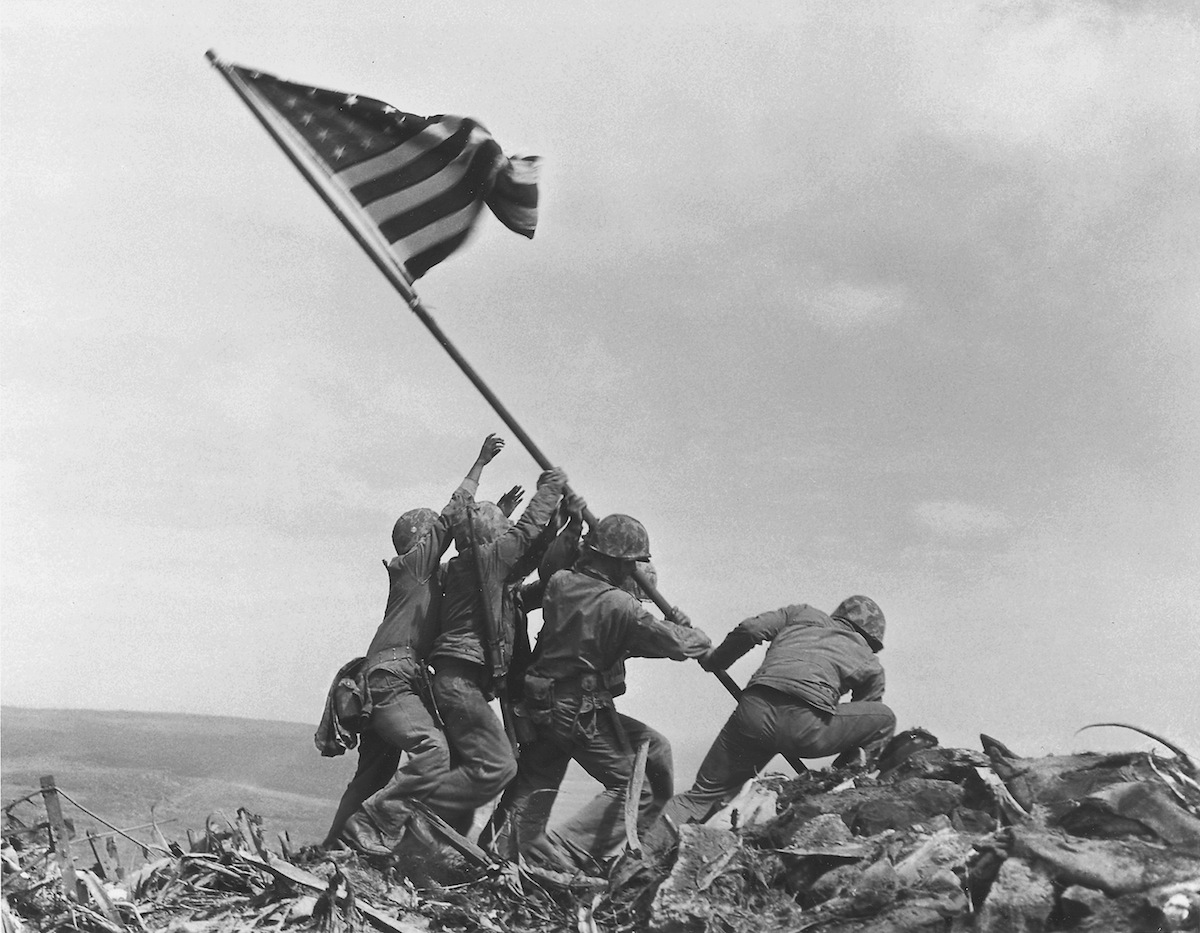
One day in late February of 1945, TIME correspondent Robert Sherrod cabled his editors a report about what had occurred on the island of Iwo Jima during the previous day. The island’s Mount Suribachi had been captured that morning, Feb. 23, and an American flag had been raised there. “A lot of the boys cried when they saw the flag raised on top of the mountain,” Sherrod reported, in parentheses, having heard so from a marine officer.
“When the U.S. flag was raised over this highest point on the island,” the magazine duly informed readers in the next issue, “some marines wept openly.”
(Read more about Sherrod’s cables from the beginning of the battle here.)
The sight that made those men weep led to one of the most enduring images of the war and perhaps the 20th century. The Joe Rosenthal Associated Press photograph of a flag-raising on Suribachi was printed in that very issue of TIME, with a caption noting that the moment would “rank with Valley Forge, Gettysburg and Tarawa.” And, within weeks, the picture had become, as TIME reported then, “easily the most widely printed photograph of World War II.”
But did the photograph actually capture the moment that made the marines cry? It’s hard to be certain. Rosenthal’s photo wasn’t of the first moment the mountain was captured and claimed, as TIME explained:
Along with the praise came inevitable murmurs that the sculptural symmetry of the picture was “too good to be true.” Last week short (5 ft. 6 in.), bespectacled, mustached Associated Press Photographer Rosenthal, 33, camera veteran of Guadalcanal, Guam and Peleliu got back to the U.S. Said he: the picture was taken without one word of direction by him, was completely unposed.
Along with him came the full story of the first flag raising on Mt. Suribachi (Rosenthal’s was the second) and the bad luck of Marine Photographer Louis R. Lowery. On D-plus-four, Sergeant Lowery, the only photographer present, scrambled to the top of 546-ft. Suribachi, took 56 pictures of marines raising a 3-ft. American flag under heavy fire. A Jap grenade landed at Lowery’s feet; he ducked, tumbled 50 feet down the side of the volcano, wrenched his side, smashed his camera. For all his pains, his shot of Iwo’s first flag raising was far from dramatic. A few hours later, when firing was less severe but still continuing, a second band of marines made their way to the top, planted a larger flag in the same spot. This time A.P.’s Rosenthal was along, got his great picture.
And, the article added, neither of those moments were official. Though the high point had been captured, it would take weeks for the marines to take the whole island. It wasn’t until March, when that mission had been accomplished, that the U.S.’s Admiral Chester Nimitz supervised the official raising of an American flag at Suribachi.
Read next: The True History Behind Downton Abbey’s Anti-Semitism Storyline
More Must-Reads from TIME
- Cybersecurity Experts Are Sounding the Alarm on DOGE
- Meet the 2025 Women of the Year
- The Harsh Truth About Disability Inclusion
- Why Do More Young Adults Have Cancer?
- Colman Domingo Leads With Radical Love
- How to Get Better at Doing Things Alone
- Michelle Zauner Stares Down the Darkness
Write to Lily Rothman at lily.rothman@time.com